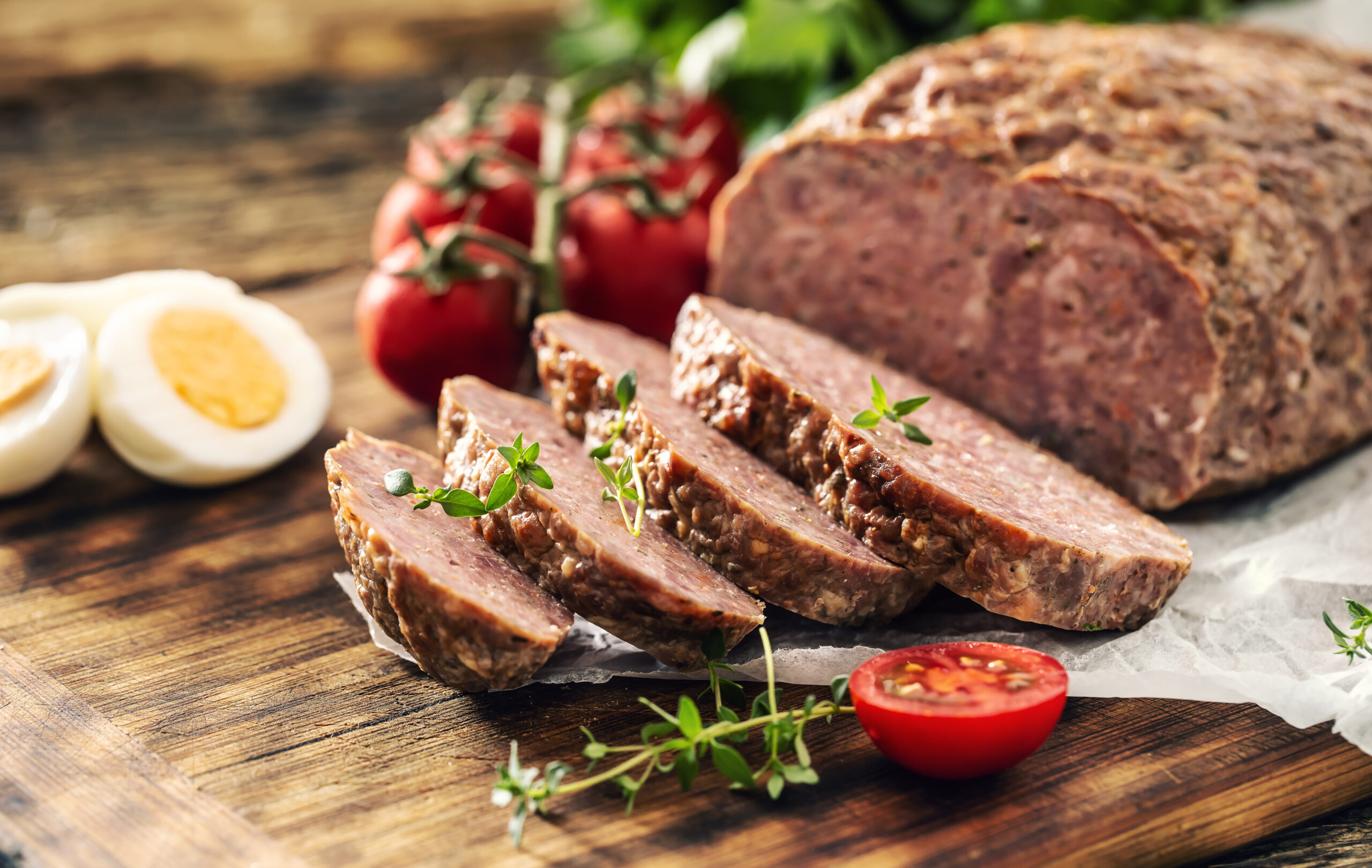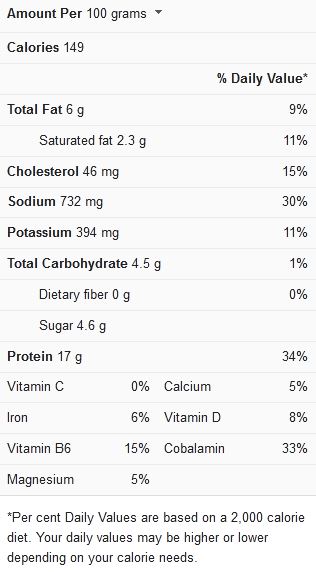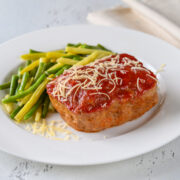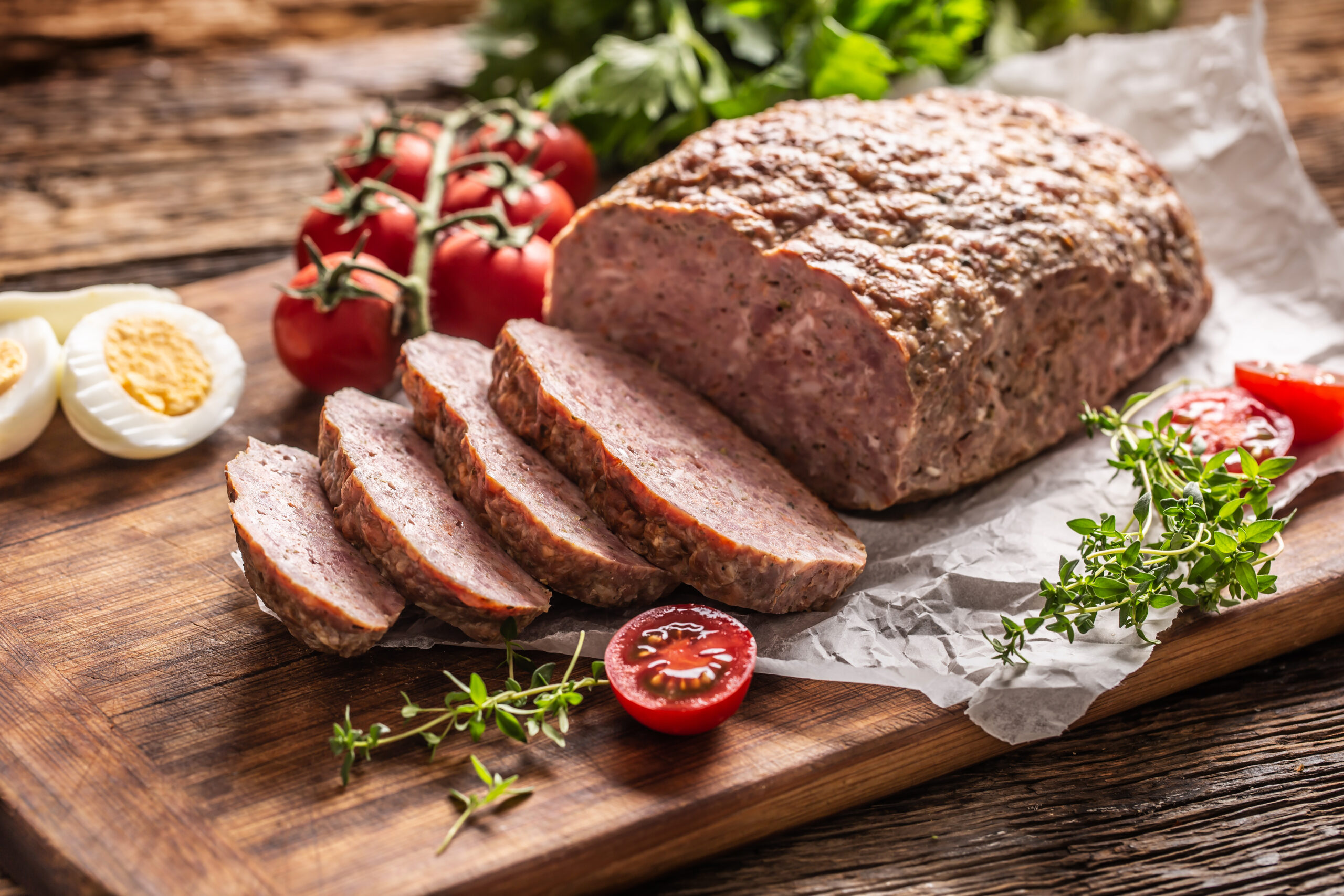A wonderful meatloaf is the stuff of cozy comfort food fantasies – as long as it’s prepared with the attention and care it deserves. You probably already know some generic stuff about cooking meatloaf. Still, to make the most delicious meatloaf recipes, you’ll need a lot more than basic information, which is exactly why we’re here!
In this article, we’ll be teaching you what goes on in meatloaf recipes, ideal cooking duration at specific temperatures, and some other tips you were probably not aware of but totally need for amazing results. So, learn all you can; you’ll be needing it.

Meatloaf Nutrition Facts

Tips for cooking meatloaf
Meatloaf recipes tend to turn out great when you have a few extra tricks up your sleeve, like some of the ones we’ve provided for you below:
Experiment with different meat kinds – If you’ve always prepared meatloaf using beef, try experimenting with different meats! To improve your loaf’s overall flavor and texture, substitute up to half of the beef with ground pork or sausage.
Some individuals add ground chicken or turkey to the recipe to make their meatloaf a little leaner. But be careful when doing this because the fat content is crucial for a moist and tasty meatloaf.
Keep it “cheese-y” – Put as much cheese as you can into your meatloaf. In the oven, it goes all melty and gooey, giving the finished meatloaf a “cheeseburgers on the grill in the summertime” feel.
Give it a flavor boost – Wet ingredients can help your finished meatloaf retain moisture and taste. Toss your beef mixture with ketchup, BBQ sauce, Worcestershire sauce, soy sauce, mustard, A1 sauce, or even V8 juice!
Add some sautéed vegetables to the mix for added flavor (and a clever way to make it a little healthier). Add cooked carrots, celery, mushrooms, zucchini, or spinach to the mix to improve your meatloaf’s moisture, flavor, and texture.
Breadcrumbs are crucial elements in the mix – Breadcrumbs are essential to the chemistry of meatloaf-making, far from being a “filler element.” When breadcrumbs are incorporated into the meat, they absorb and retain the fat and liquids that would otherwise seep out, leaving the flesh bone-dry.
You can be as creative as you want with your breadcrumbs. Panko breadcrumbs are a traditional option, although crushed saltines, fried onions, stuffing mix, or even quick potato flakes could be substituted.
Glaze adequately – A time-honored tradition is to finish a meatloaf by smothering it in a sticky glaze. Many people use a ketchup-brown sugar combo, but you could also use canned tomato soup, Heinz 57, or even brown gravy.
Alternatively, you may omit the glaze entirely and cover your meatloaf in bac
on instead. Simply wrap uncooked bacon strips over the top of the formed meatloaf, tucking the ends beneath the meatloaf, and bake.
Don’t use the pan – Many people use loaf pans to give their meatloaf shape and structure, although they aren’t required. Form it by hand on a sheet pan for a more rustic look. One of the advantages of this method is that it exposes more surface area, which results in more exquisite caramelization. Instead of one large loaf, you may prepare mini ones on a sheet tray, which makes for nicer leftovers.
Use your hands – Your hands are the best tools for the job when it comes to preparing meatloaf! Carefully combine the components and avoid over-compressing them. Be careful when placing the beef mixture into your loaf pan. It will become tough and dense if you pack it down or squeeze it too much.
Allow the meatloaf to rest – After removing the meatloaf from the oven, allow it to rest for at least 10 minutes. If you cut into it too soon, all of the liquid will escape, leaving you with a dry and uninspiring meatloaf.
Taste the meatloaf – You must taste it before cooking it to ensure that it is correctly seasoned. There’s a simple technique to test the flavor of your meatloaf before you put it in the oven, and not to worry, it doesn’t entail eating raw meat.
Simply heat up a portion of the beef mixture in a pan on the stovetop. When it’s done, taste it to make sure the flavor is where you would like it to be.
Make use of your thermometer – Don’t guess when it comes to determining whether or not your meatloaf is cooked through. To be sure, use a digital thermometer, and it’s done when the temperature reaches 155°F.
Cooking time for meatloaf at 425
Cooking meatloaf at 425 degrees is best done using the timing guideline in the table below:
| Cooking temperature | Cooking time |
| 425 F | Bake for 30 minutes |
| 350 F | Bake for another 30 minutes after reducing the temperature from 425 F to 350 F. |

Meatloaf recipe (6 to 8 servings)
Ingredients
- 2 pounds of ground beef
- Meat from 3 hot Italian sausages (squeezed from casings)
- ½ pound of ground veal
- 1 to 2 teaspoons of salt
- ½ cup of freshly grated Parmesan cheese
- 1 cup of bread crumbs
- 3 garlic cloves, minced
- 1 cup of minced onion
- ½ cup of minced parsley
- 1 teaspoon of crushed rosemary or ground marjoram
- 1 teaspoon of freshly ground black pepper
- 3 to 4 eggs, lightly beaten
- Peel of 1 lemon, grated
Instructions
- Preheat the oven to 425 degrees Fahrenheit.
- With your immaculately clean hands, combine all of the ingredients. Bake for 30 minutes in a standard 9 ¼ by 5 ¼ by 2 ¾ -inch loaf pan coated with oiled aluminum foil.
- Reduce the oven temperature to 350°F and bake for another 30 minutes, basting occasionally with water. When the beef loaf has produced a nice brown crust on top and the juices run clear, it’s done.
- Allow 10 minutes for the meatloaf to rest. Then, at both ends of the loaf, grab the top of the aluminum foil and pull it out of the pan and onto a serving tray. With a spatula, lift the bread off the foil and remove it.
- Serve with ketchup and/or your favorite hot sauce or chutney. This meatloaf, like all meatloaves, is best served at room temperature.
Notes
This recipe is cooked at 425 F and produces delicious meatloaf that you and your family are sure to enjoy. If you still need more ideas on how to cook meatloaf recipes, then check out this video recipe.
